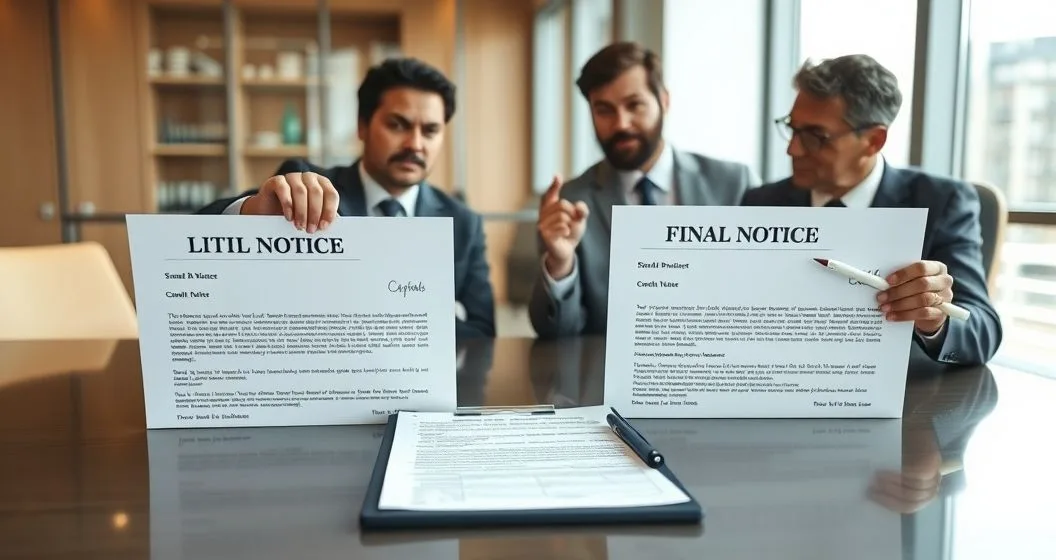Overview
Both LT11 and CP504 are late-stage collection notices from the IRS that warn taxpayers of potential levy actions (seizing bank accounts, wages, or other assets). While language and delivery can differ—LT11 is often a manual/office-generated letter and CP504 an automated final notice—the practical result is the same: you generally have limited time (about 30 days) to act to stop collection or to request a Collection Due Process (CDP) hearing. (See IRS Publication 594: The Collection Process.)
Key differences at a glance
- LT11: Often a letter code used by IRS personnel to escalate collection. It notifies you that the IRS intends to levy and explains next steps, including your appeal rights.
- CP504: Commonly an automated “final notice” that precedes levy and emphasizes immediacy. It typically gives the same 30‑day window to respond and request a hearing.
Both notices should be treated as urgent. The exact wording matters: read the notice for the date by which you must respond and the contact information for appeals or payment.
How the notice timeline and appeal rights work
- 30‑day window to request a CDP hearing: Under Internal Revenue Code section 6330, a valid final notice of intent to levy generally gives you 30 days to request a CDP hearing (use Form 12153). A timely CDP request freezes most collection actions until the hearing is resolved. (IRS, “Collection Due Process (CDP) rights” and Publication 594.)
- Eligibility: CDP is available if the IRS issued a valid notice of intent to levy after an assessment and demand for payment. Some collection notices or situations may use an equivalent appeals process—check the specific notice language.
Practical steps to respond (priority order)
- Verify the notice is legitimate. Scam notices exist. Confirm the taxpayer ID, tax period, assessed amount, and contact numbers—compare with IRS guidance at “Understanding Your IRS Notice.” If unsure, call the IRS collection phone number listed on the notice or the general IRS help line. (IRS.gov)
- Check your account balance and filing status. Review IRS online account or request a transcript to confirm assessments.
- Preserve appeal rights. If you want to stop a levy, file Form 12153 (Request for a Collection Due Process or Equivalent Hearing) before the deadline shown on the notice. The form and instructions are on IRS.gov.
- Arrange immediate relief if needed. Options include: full payment; an installment agreement (short-term or long-term); currently not collectible status for hardship; or an Offer in Compromise (Form 656). If a levy is already directed to a bank, emergency options exist to request a release. See internal link below for emergency steps.
- Engage a tax professional. A CPA, enrolled agent, or tax attorney can negotiate with the IRS on your behalf and help prepare appeals or collection alternatives.
Common scenarios (real-world context)
- Missed payments after prior notices: Taxpayers who ignore earlier bills often receive an LT11 as staff escalate collection. Responding early saved one client from wage levy by setting up an immediate installment agreement.
- Sudden CP504 delivery: Because CP notices can be automated, some taxpayers first see a CP504 with little warning. Promptly filing Form 12153 prevented a bank levy in another client case.
When to request a CDP vs. other remedies
- Request a CDP (Form 12153) if you want an independent hearing and possible appeal rights to the U.S. Tax Court. Filing stops most levy actions until the appeal is resolved.
- If you simply need time to pay and do not need appeals rights, negotiate an installment agreement directly with the IRS (online or by phone).
Mistakes to avoid
- Ignoring the notice. Failure to act is the most common reason levies occur.
- Missing the 30‑day deadline. A late CDP request usually loses the right to an appeal and can limit remedies.
- Paying the wrong amount or sending payment without confirming the correct account/year—always verify assessment details first.
Quick response checklist
- Date received and deadline: mark your calendar.
- Confirm legitimacy and amounts (IRS online account or transcripts).
- File Form 12153 if you want a CDP hearing (within the notice deadline).
- Contact the IRS to discuss installment agreements or other relief.
- Consult a tax professional if the situation is complex or if you face an imminent levy.
Internal resources on levy response
- For immediate steps to stop a bank levy, see: “Stopping an IRS Bank Levy: Emergency Options” (https://finhelp.io/glossary/stopping-an-irs-bank-levy-emergency-options/).
- For guidance on CP504 and final notices, see: “Understanding IRS CP504 and Final Notices Before Levy” (https://finhelp.io/glossary/understanding-irs-cp504-and-final-notices-before-levy/).
- For rapid release tactics, see: “How to Get a Federal Tax Levy Released Quickly” (https://finhelp.io/glossary/how-to-get-a-federal-tax-levy-released-quickly/).
When to get professional help
If the levy threat involves large sums, business accounts, payroll taxes, or garnishment of wages, contact a qualified tax practitioner immediately. In my practice (15+ years in tax resolution), early intervention—filing a timely CDP request or negotiating an installment agreement—regularly prevents levies and preserves more favorable outcomes.
Authoritative sources and further reading
- IRS, “Understanding Your IRS Notice” (https://www.irs.gov/individuals/understanding-your-irs-notice-ntf).
- IRS Publication 594, The Collection Process (IRS.gov).
- IRS, guidance on Collection Due Process (CDP) rights and Form 12153.
Professional disclaimer
This article is educational and not legal or tax advice. For personalized guidance, consult a qualified tax professional (CPA, enrolled agent, or tax attorney) or contact the Taxpayer Advocate Service if you are experiencing financial hardship.



